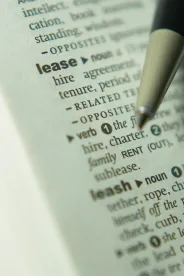The COVID-19 pandemic has increased the number of companies that are switching to full-time telework or hybrid work arrangements, often resulting in reduced space needs. To minimize monetary exposure for unused premises, some companies try to sublease their excess space. If you’re a sublandlord, there are some practical issues to consider as you negotiate your sublease, to minimize your liability exposure and avoid conflicts during the sublease term.
The following are a few issues to consider before you start a search for a subtenant:
-
Review your lease to see what types of rights the master landlord has with respect to subleases. Usually, master landlords have consent rights over any subleases of their space. Consent rights can carry various monetary costs related to landlord’s review of your request.
-
Leases often entitle master landlords to some or all of the profits you might make off of subleasing your space, so if you think you might sublease your space for more than you pay, review your lease to confirm how much of the profit you will get to keep.
-
Master landlords sometimes have recapture rights if you ask for their consent, meaning that they could choose to take the space back and carve it out from your lease obligations. If an existing building tenant is looking to expand or the landlord otherwise has a prospective tenant that might want your space, it might save you time and money to first check in with your landlord about whether it would exercise such a recapture right.
-
Confirm that the building you’re in is not subject to prohibited or exclusive uses in favor of other tenants. If it is, then you will need to avoid subleasing space to a tenant which is operating for such a prohibited or exclusive use.
-
Consider if you plan to let the subtenant use (or even keep) your furniture.
As you negotiate a sublease, keep these issues in mind:
-
A sublease will only be effective if a master landlord consents to it (assuming that the master lease requires master landlord consent), so you will not be able to deliver the space to the subtenant simply when the sublease is signed, but will have to wait until the master landlord executes its consent document.
-
At some point you will want to be able to terminate the sublease if the master landlord refuses to consent to the sublease to your chosen subtenant.
-
Do not give your subtenant any rights to the space for any periods which are outside of your existing lease term.
-
It may not matter to you what the subtenant does to the space, but remember that the master landlord likely has consent rights over any alterations and signage, as well as, rights related to how the space is to be surrendered at the end of the term and whether any alterations have to be removed at such time—make sure that your subtenant is required to obtain master landlord’s consent in all of these scenarios and that it is responsible for surrendering the premises in the condition required by your lease.
-
Make sure that you have flexibility to exercise any termination rights that are granted to you under your master lease (for example, in a casualty situation), and do not grant subtenant rent abatement rights during the term unless you know you will get the benefit of those rights under your master lease.
-
Make sure that the subtenant indemnifies you if their actions cause you to be in breach of your master lease. Pay particular attention to a subtenant’s liability if they remain in holdover after their sublease ends. If they’re in holdover at the same time that your master lease has expired, then you will also be considered to be in holdover under your master lease and in that instance, the subtenant’s liability to you should cover whatever damages you might incur to the master landlord, at the least.
-
Since subleases are subject and subordinate to master leases and the sublandlord and subtenant are generally required to perform the obligations—while also having the rights—of the master landlord and master tenant, respectively (subject to any conflicting terms of the sublease), be clear that the subtenant is not entitled to any of your rights as tenant under the master lease to rent abatements, allowances, master landlord construction obligations, audit rights, termination rights, renewal rights, and rights of first offer, refusal or purchase, among others.
-
Be clear in the sublease that you are not responsible for performing the duties of master landlord under the master lease with respect to building management, access, parking, maintenance, utilities, and services.
-
Be sure that the cure periods for defaults that a subtenant has under the sublease are shorter than the ones granted to you under the master lease, so that you have time to step in and complete the cure if the subtenant fails to timely do so.
-
If you sublease all of your space in a given building, make sure that you update your notice address with your master landlord, in case your prior notice address was at the premises.




 />i
/>i
